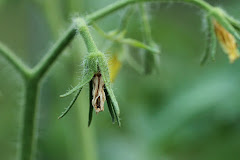Cover crops are grown to produce green organic matter to turn under the soil. Along the Front Range, plant them from September to no later than mid-October. In addition to boosting organic matter, they prevent wind and water erosion over the winter, build soil structure and suppress weeds.
Legume cover crops can add nitrogen to the soil through the action of nitrogen fixing bacteria. It is good practice to buy rhizobium (beneficial root-associated or “rhizo” bacteria) and apply as specified if the seed is not rhizo coated. Rhizobium bacteria are specific for the legume species and are sold with a specific expiration date.
Broadcast the seed/rhizobium mix at the specified seeding rate and water to germinate. If irrigation systems are shut down, hand watering in the fall will help the crop establish before growth slows for the winter.
 Winter ryegrass is often used alone as a cover crop (see photo). Winter rye/Austrian pea or a winter rye/hairy vetch mixture overwinter well in Colorado. Winter rye is a quick germinating and pioneering grass. Hairy vetch is a hardier legume than winter pea for the coldest areas. Seed winter rye and Austrian pea at 4 to 6 ounces per 100 square feet. Plan on 2 to 3 ounces of hairy vetch seed for each 100 square feet of garden area.
Winter ryegrass is often used alone as a cover crop (see photo). Winter rye/Austrian pea or a winter rye/hairy vetch mixture overwinter well in Colorado. Winter rye is a quick germinating and pioneering grass. Hairy vetch is a hardier legume than winter pea for the coldest areas. Seed winter rye and Austrian pea at 4 to 6 ounces per 100 square feet. Plan on 2 to 3 ounces of hairy vetch seed for each 100 square feet of garden area.Note that these green winter plants are attractive to deer and geese. If they are well established prior to extreme winter temperatures, plants generally recover from winter grazing in spring.
When turned under, the decomposing green material can deprive spring vegetables of oxygen if not done far enough in advance of planting. Plan to mechanically till or hand spade under at least two weeks and better yet a month prior to planting. The legumes may have to be tilled several times to kill them and prevent resprouting.
Many gardeners do not have the land area to plant a cover crop for the growing season without depriving themselves of vegetables for a year. Winter cover crops solve that problem.
Consider planting a cover crop this winter to improve your soil.












